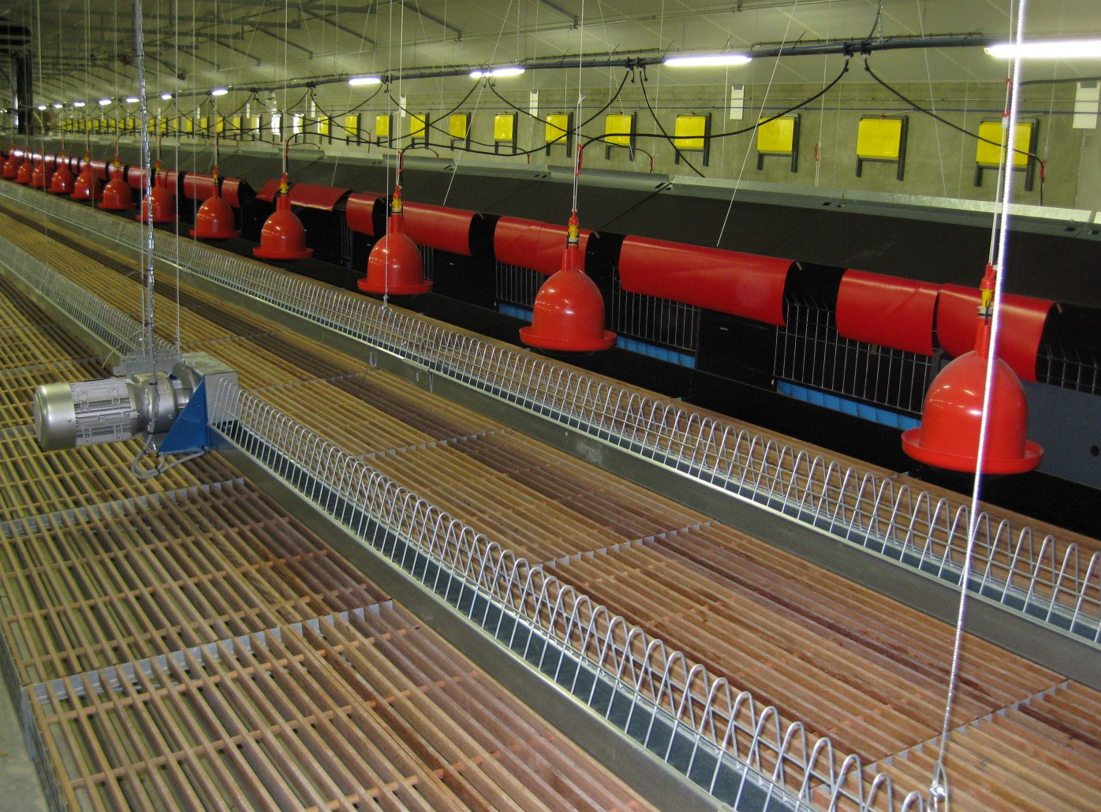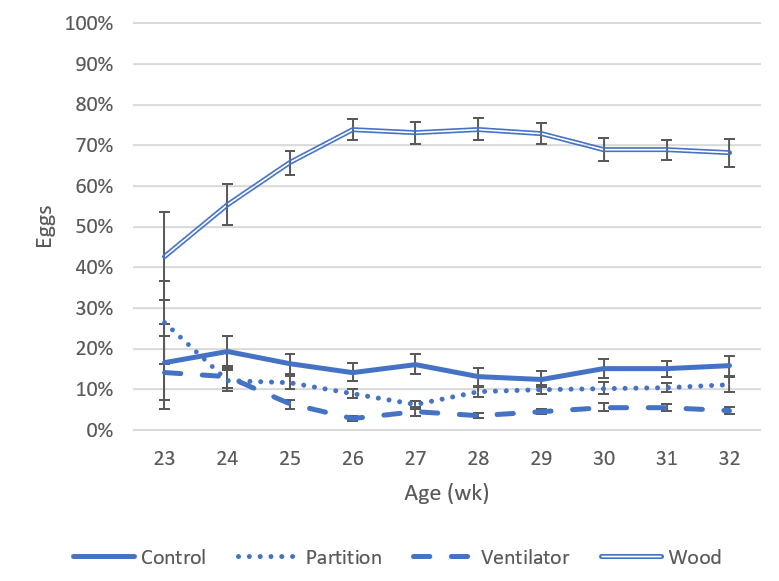



How do broiler breeders choose where to lay an egg?
A hen has the natural desire to breed. To enhance her chance for offspring she will look for a safe, clean and sheltered place to lay her eggs. She will demonstrate this same behaviour in a breeder house. For successful hatching egg production it is therefore essential to create the conditions that allow this behaviour. In 2017 Anne van den Oever started working as a researcher for Vencomatic Group with the specific task to do a PhD study on nesting behaviour of broiler breeders. An academic research in collaboration with Wageningen University in the Netherlands .She completed her research this year and would like to share the results.
Nest selection
In order to understand why broiler breeders lay their eggs outside the nests, we have to know which factors are involved in nest site selection. This starts with finding out what makes a nest attractive, but also studies how social interactions between the birds and mobility of the birds affects floor laying.
Anne van den Oever: “During the past years I performed multiple experiments to study the factors involved in nesting behaviour. My first experiment looked at the preference of broiler breeders for different nest designs. We offered 4 nest designs to 6 different groups of 100 hens and 9 roosters: a plastic nest, a plastic nest with a partition in the middle to create two smaller nest areas, a plastic nest with a ventilator underneath to create draught inside the nest and a wooden nest. The number of eggs laid in each nest was noted during the first 12 weeks of the production phase. The behaviour of the hens inside the nests was observed using infrared cameras. The hens had a clear preference for the wooden nests as 80% of the hens laid their eggs there. Furthermore, the hens performed more sitting behaviour and had less nest visits per egg in the wooden nests. These are both signs of more settled nesting behaviour, another measure for preference. The wooden nests became very crowded due to this large preference, but the hens continued to come back anyway, showing the strength of their preference.”


Preventing floor eggs
By observing what the broiler breeders want, the welfare of the birds can increase as well as the farmers’ welfare by reducing the number of floor eggs that need to be collected. An optimal nest is your strongest protection against floor eggs. According the study of Anne there are three important factors on how a nest needs to be designed for maximum nest acceptation:
- Wooden nest wall, when a hen can choose, 80% of hens will choose a wooden nest;
- Avoiding draughts, hens are very sensitive and avoid nests with draughts, resulting in more floor eggs:
- Nest design, is important for the number of nest inspections and visits that the hen makes. If the nest is too big, you will get more disturbance inside the nest, resulting in more floor eggs.
Van Gent Nest
After realising that wooden nests were preferred compared to a plastic nest by broiler breeders Vencomatic Group had two options: create their own market competitive wooden nest or turn to others who have experience with wooden roll away nests with low floor eggs. They were able to acquire the Van Gent company, with their excellent reputation on technical performance of their wooden nest. For years, van Gent has had an excellent performing wooden nest and this is now part of the Vencomatic Groups range of products. With their range of products Vencomatic Group delivers solutions for every step in the poultry production process. Creating the best conditions that allow birds to perform at their best and to safeguard the quality of eggs.








